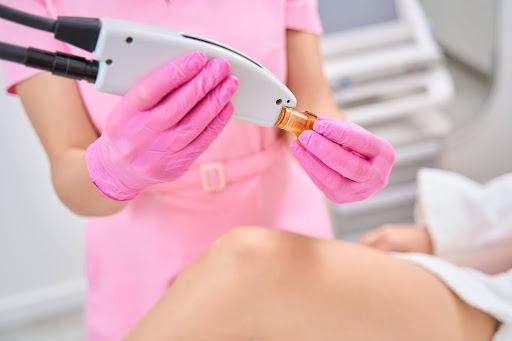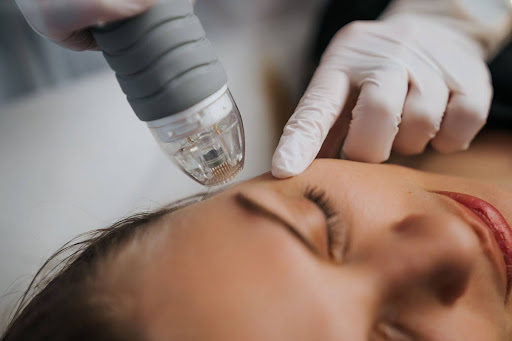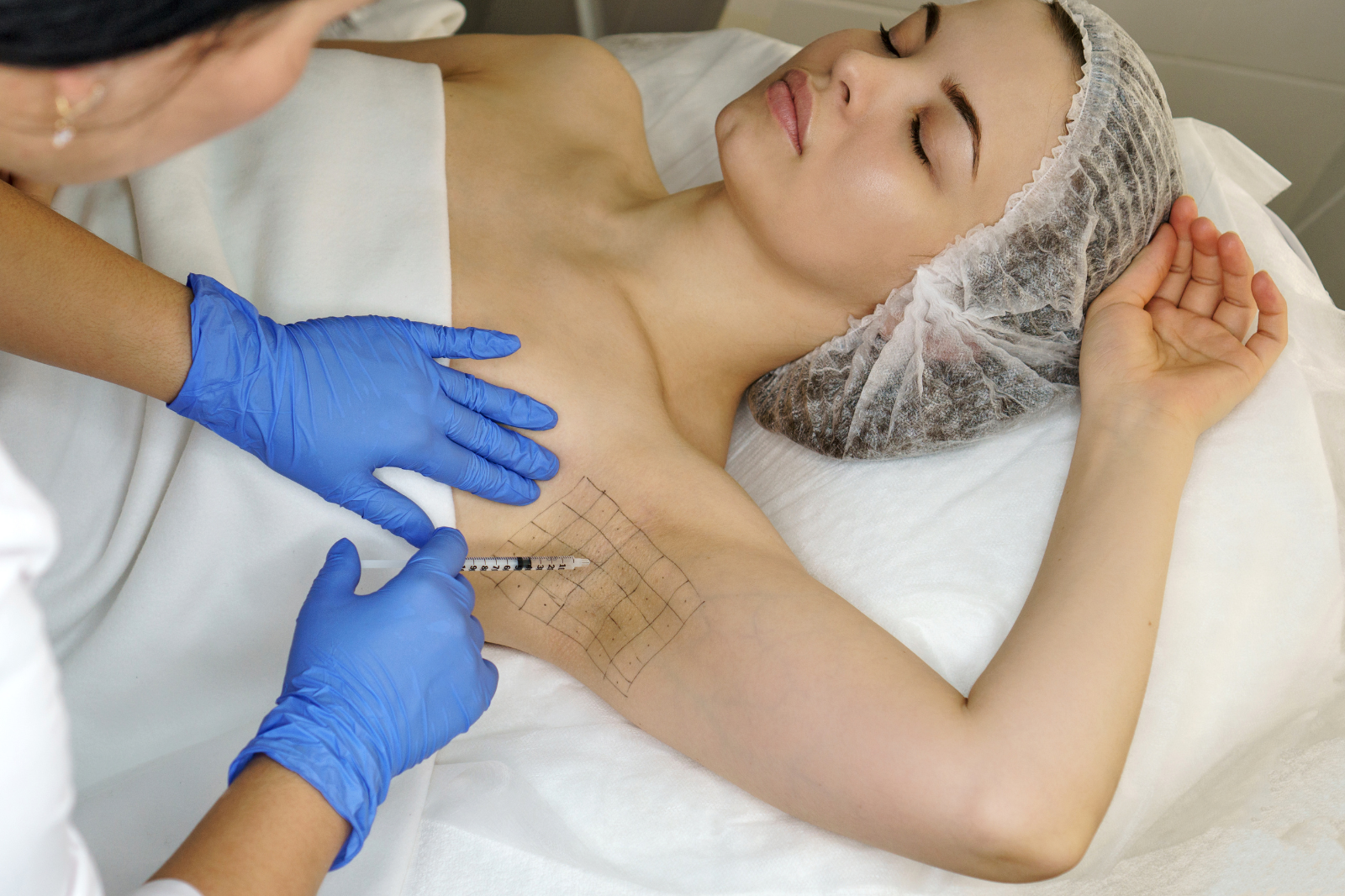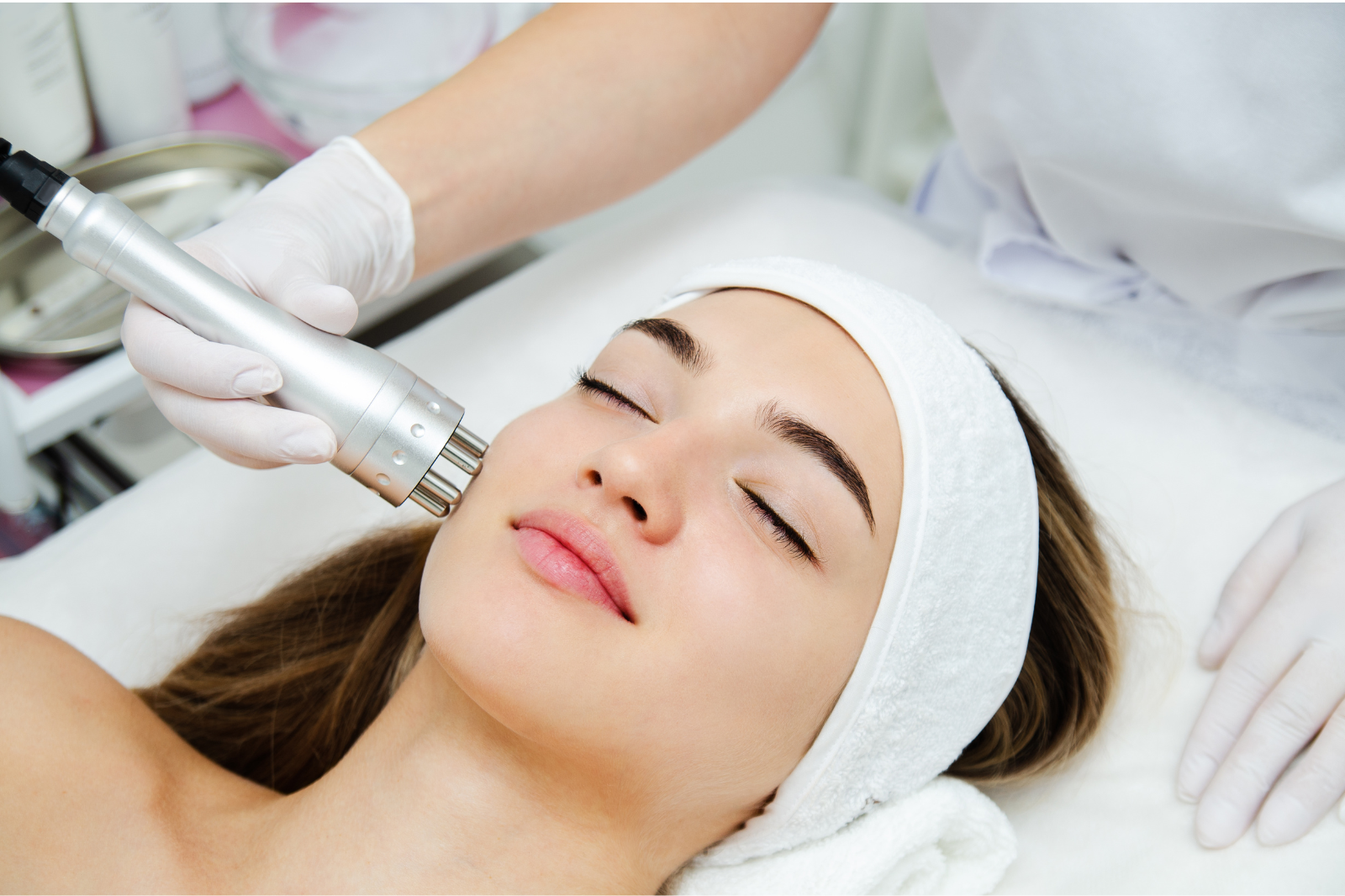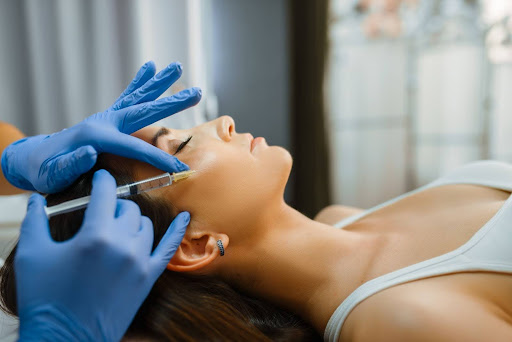Botox has become one of the most popular treatments to reduce fine lines and wrinkles. Whether you’re considering Botox for cosmetic purposes or a medical treatment, understanding the procedure, its effects, and what to expect can help you make an informed decision. This comprehensive guide explains everything you need to know before your first Botox appointment.
Are You Interested in Getting Botox?
Botox, a neuromodulator derived from botulinum toxin, temporarily relaxes facial muscles to enhance your youthful appearance without surgery. With quick procedures and minimal downtime, Botox is a popular choice for achieving natural-looking results and boosting self-confidence. At Botox Montreal, we offer safe and efficient Botox treatments for various areas, including forehead lines, crow’s feet, and neck bands. Contact us today to schedule a consultation and begin your journey to smoother, rejuvenated skin!
Understanding Botulinum Toxin Injections: Is Botox Safe?
Botox is derived from the neurotoxic protein Botulinum Toxin, a purified substance produced by the bacterium Clostridium botulinum. Initially known for its potential dangers in causing botulism, when used in controlled, diluted doses, it has become a powerful tool in both cosmetic and medical treatments. Botox is primarily employed to reduce the appearance of wrinkles and lines on the face, particularly those caused by repeated muscle contractions over time.
How Botox Works
When injected into targeted muscles, Botox works by temporarily blocking nerve signals that instruct muscles to contract. These contractions are responsible for forming dynamic wrinkles, such as crow’s feet and forehead lines, which become more prominent with age and repeated facial expressions like squinting or smiling.
Mechanism of Action
The neurotoxin in Botox interferes with the communication between nerves and muscles at the neuromuscular junctions. It prevents the release of acetylcholine, a neurotransmitter responsible for muscle contractions. As a result, the treated muscles experience a temporary reduction in their ability to contract forcefully.
Effects on Wrinkles and Lines
By reducing muscle activity, Botox effectively smooths out existing wrinkles and prevents the formation of new ones. This is particularly effective for dynamic wrinkles, which appear during facial expressions but fade when the face is at rest. Over time, with repeated treatments, Botox can also diminish the depth of static wrinkles, which are visible even when facial muscles are relaxed.
Medical Applications
Beyond its cosmetic benefits for facial rejuvenation, Botox is also used to treat various medical conditions. These include chronic migraines, excessive sweating (hyperhidrosis), cervical dystonia (neck spasms), and certain neurological disorders. In each case, Botox’s ability to temporarily paralyze muscles offers therapeutic relief and improves the quality of life of many patients.
Safety and Considerations
When administered by a trained medical professional, Botox is safe and with minimal side effects. Common side effects of cosmetic treatments like Botox can include temporary bruising, swelling, or mild discomfort at the injection site, which typically resolves quickly. Rare but serious complications are possible, emphasizing the importance of choosing a qualified provider and discussing any concerns or medical history before treatment.
How Much Does a Botox Procedure Cost in Montreal?
What Are the Benefits of Botox Injectable Treatments?
Botox injections offer a myriad of benefits for both cosmetic enhancement and medical treatments:
Cosmetic Effects
- Reduction of Facial Wrinkles: Botox effectively smooths out facial wrinkles and lines, including crow’s feet, forehead wrinkles, and smile lines.
- Treatment of Frown Lines and Glabellar Lines: By targeting specific muscles responsible for frown lines between the eyebrows (glabellar lines), Botox can soften their appearance.
- Complementary to Dermal Fillers: Botox complements dermal fillers by addressing dynamic wrinkles while fillers restore volume to static wrinkles.
- Achievement of Aesthetic Goals: Tailored treatment plans ensure Botox meets individual aesthetic desires, providing natural-looking results.
- Management of Skin Conditions: Botox can help manage conditions like excessive sweating (hyperhidrosis) and a gummy smile, improving overall facial appearance.
Medical Uses
- Botulinum Toxin Type A: Botox, a type of botulinum toxin A, is used to inhibit excessive muscle movement that causes conditions such as chronic migraines and overactive bladder.
- Muscle Movement Control: It effectively reduces muscle contractions, alleviating symptoms and enhancing quality of life.
- Personalized Treatment Plans: Each treatment is customized to address specific medical needs, ensuring optimal outcomes.
- Management of Neck Pain: Botox injections can provide relief from neck spasms and associated pain.
- Expert Care by Qualified Practitioners: Treatment by experienced providers minimizes risks and maximizes effectiveness.
Practical Benefits
- Minimal Downtime: Patients can resume normal activities shortly after treatment, with no need for extended recovery periods.
- Preventive Measures: Proactively addressing wrinkles and lines can prevent them from deepening over time.
- Temporary Muscle Weakness: While muscles are temporarily weakened, it can reduce the severity of deep wrinkles.
- Safe Cosmetic Injections: Botox is a safe option when administered by a skilled cosmetic surgeon or practitioner.
Botox injections represent a versatile and effective treatment option for addressing cosmetic concerns and medical conditions alike. With its ability to target specific muscles and enhance facial aesthetics, Botox offers patients a non-surgical solution to achieve their desired look and improve their quality of life. Choosing a qualified practitioner and discussing individual goals are essential steps toward achieving optimal results with Botox treatments.
Who Is a Good Candidate for a Botox Treatment?
A good candidate for Botox typically meets several criteria that make them suitable for the treatment:
- Presence of Dynamic Wrinkles: Candidates often have visible facial wrinkles or lines caused by repeated muscle movements, such as frown lines, crow’s feet, or forehead lines.
- Desire to Reduce Wrinkles: Individuals seeking to diminish the appearance of wrinkles and achieve a smoother, more youthful facial appearance are good candidates.
- General Health: Botox candidates should be in good overall health with no active infections or significant medical conditions that could interfere with treatment or healing.
- Realistic Expectations: They should have realistic expectations about what Botox can achieve. Botox can soften wrinkles and lines but will not completely erase them or prevent new wrinkles from forming.
- No Allergies: Candidates should not have allergies to any ingredients in Botox or related products. It’s essential to discuss any allergies or sensitivities with the provider.
- Willingness to Follow Post-Treatment Care: Candidates should be willing to follow post-treatment care instructions provided by their healthcare provider to optimize results and minimize potential side effects.
- Age Consideration: While Botox is commonly used to treat signs of aging in adults, there is no specific age limit. Candidates range from their late 20s to older adults, depending on individual needs and skin condition.
Who Should Avoid Botox?
- Pregnancy and Nursing: It’s generally recommended to avoid Botox injections during pregnancy or while breastfeeding due to potential risks.
- Certain Medical Conditions: Individuals with certain neuromuscular disorders or conditions that affect muscle strength or nerve function may not be suitable candidates.
Choosing a qualified healthcare provider is important for assessing candidacy and achieving safe, effective results with Botox. They can evaluate individual factors, discuss goals, and customize a treatment plan tailored to each candidate’s unique needs and concerns.
What Are The Places To Get Botox Injections for Pain Relief?
Ensuring Ideal Treatment Outcomes: How to Prepare for a Botox Appointment
Before Your Botox Appointment
- Know Your Medical History: Share any medical conditions or previous treatments with your provider. It helps them tailor the treatment plan just for you.
- Avoid Blood Thinners: Skip aspirin or ibuprofen before your appointment to reduce the chance of bruising.
- Discuss Your Concerns: Whether it’s forehead lines or jaw muscles, talk openly with your provider about what bothers you most.
Day of Your Appointment
- Use Ice Packs: Consider applying ice packs to numb the area before your appointment. It can make the injections more comfortable.
- Talk About Sweat: If you have issues with sweating, let your provider know. Botox can help with that too!
- Take It Easy: Avoid intense workouts or activities right before your appointment. This helps the treatment work its magic without any extra blood flow.
After Your Appointment
After your Botox treatment, it’s essential to follow some post-care tips to maximize results and minimize any potential side effects:
Immediate Aftercare
- Avoid Touching the Treated Areas: Refrain from touching, rubbing, or applying pressure to the treated areas immediately after treatment to prevent the spread of Botox to unintended muscles.
- Stay Upright: Keep an upright position for the first few hours post-treatment. This helps ensure the Botox stays in the intended injection sites.
- Ice Packs: Applying ice packs to the treated areas can help reduce swelling and discomfort. Use them intermittently for short periods during the first day.
Activity Restrictions
- Avoid Strenuous Activities: Refrain from vigorous exercise or activities that increase blood flow to the face for at least 24 hours. This helps prevent the spread of Botox and allows it to settle properly.
- Limit Sun Exposure: Direct sun exposure and heat can increase the risk of swelling or bruising. Use sunscreen and avoid prolonged sun exposure immediately after treatment.
Medication and Supplements
- Avoid Blood Thinners: Steer clear of aspirin, ibuprofen, and other blood-thinning medications for a few days post-treatment to minimize the risk of bruising.
- Discuss Prescription Medications: If you take prescription medications, discuss them with your provider to ensure they won’t interfere with Botox effects.
Long-Term Care
- Follow-Up Appointments: Schedule any recommended follow-up appointments to assess the results and consider additional treatments if needed.
- Monitor Results: Pay attention to how your facial muscles respond and the appearance of lines over the coming weeks. This helps determine if adjustments are needed for future treatments.
Addressing Concerns
- Report Any Adverse Effects: Contact your healthcare provider immediately if you experience severe swelling, muscle weakness, or signs of infection such as redness or pain.
- Personalized Recommendations: Every individual responds differently to Botox, so follow any personalized recommendations provided by your practitioner based on your medical history and treatment goals.
Mastering Post-Botox Care: Essential Aftercare Tips for Optimal Results
Effective Treatment Options: Can Botox Be Combined with Other Procedures?
Combining Botox with other cosmetic treatments like dermal fillers, lip fillers, microneedling, chemical peels, and laser resurfacing can enhance overall facial rejuvenation and address multiple aesthetic concerns. Here’s how each treatment can complement Botox:
Botox and Dermal Fillers
Dermal fillers use hyaluronic acid or other substances to add volume and plump areas of the face that have lost elasticity or volume due to aging. When used with Botox, dermal fillers can soften deep static wrinkles and enhance facial contours. Botox addresses dynamic wrinkles caused by muscle movement, while fillers restore volume in areas such as cheeks, lips, and around the mouth.
Botox and Lip Fillers
Lip fillers add volume, shape, and symmetry to the lips, enhancing their appearance. Botox can be used to complement lip fillers by reducing perioral lines (lipstick lines) and preventing the upper lip from curling under (lip flip). Together, they create fuller, smoother lips with a natural look.
Botox and Microneedling
Microneedling uses fine needles to create micro-injuries in the skin, stimulating collagen and elastin production. After microneedling, Botox can help relax facial muscles, reducing the appearance of fine lines and wrinkles. Microneedling enhances skin texture and promotes better absorption of topical Botox.
Botox and Chemical Peels
Chemical peels exfoliate the skin, improving texture, tone, and clarity by removing damaged outer layers. Botox can complement chemical peels by targeting dynamic wrinkles that are not effectively treated by peels alone. Peels enhance skin renewal, while Botox maintains a smoother, youthful appearance.
Botox and Laser Resurfacing
Laser resurfacing uses laser technology to improve skin texture, reduce wrinkles, and treat skin conditions like acne scars and sun damage. Botox post-laser treatment can further soften fine lines and wrinkles by relaxing underlying facial muscles. Laser resurfacing addresses overall skin tone and texture, while Botox targets specific dynamic wrinkles.
Considerations for Combining Treatments
- Consultation: Always consult with a qualified cosmetic provider to discuss your goals and determine the best combination of treatments for your needs.
- Timing: Proper timing and sequencing of treatments are essential to achieve optimal results without compromising safety or efficacy.
- Personalized Plan: Each person’s skin type, age, and aesthetic goals vary, so a personalized treatment plan ensures targeted and effective outcomes.
Botox Clinic in Montreal
Step into Botox Montreal and discover the benefits of Botox injections for medical and cosmetic purposes. Enjoy the benefits of quick, non-invasive treatments with minimal downtime, and achieve a more youthful appearance without surgery. Book a consultation today to explore our comprehensive treatment options and start your path to facial rejuvenation. Call (514) 900-6098 for more information!

